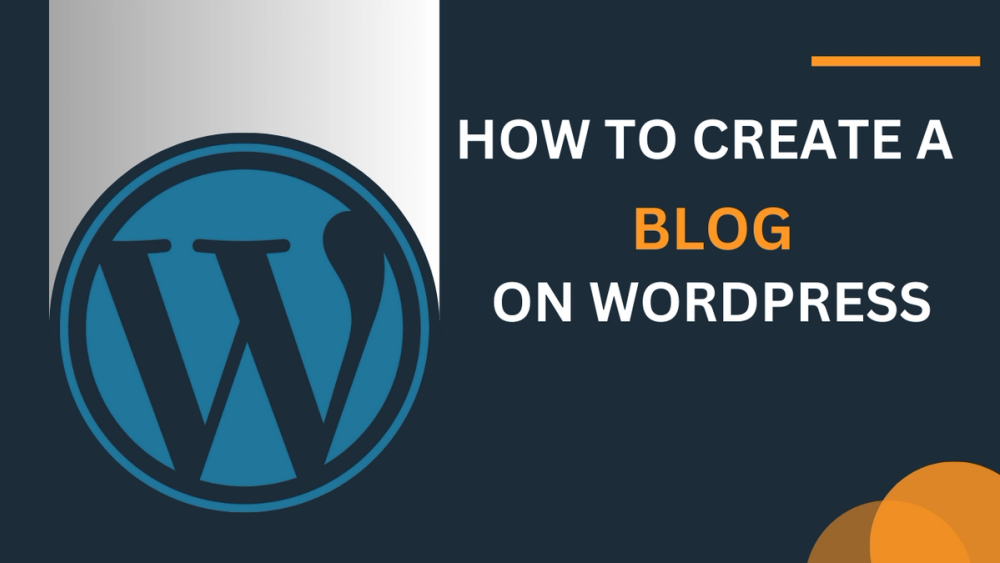How to Create a Blog on WordPress: A Step-by-Step Guide
In today's digital age, blogging has become a popular platform for sharing ideas, information, and stories with a wide audience. WordPress, one of the most popular content management systems (CMS) available, offers a user-friendly interface that makes creating and managing a blog effortless. Whether you're a seasoned writer or just starting your blogging journey, this step-by-step guide will walk you through the process of creating a blog on WordPress.

Introduction: In today's digital age, blogging has become a popular platform for sharing ideas, information, and stories with a wide audience. WordPress, one of the most popular content management systems (CMS) available, offers a user-friendly interface that makes creating and managing a blog effortless. Whether you're a seasoned writer or just starting your blogging journey, this step-by-step guide will walk you through the process of creating a blog on WordPress.
Step 1: Choose a Domain Name and Hosting Provider Before you can start a blog on WordPress, you need to choose a domain name and a reliable hosting provider. Your domain name should be unique, easy to remember, and relevant to your blog's niche. There are various hosting providers to choose from, such as Bluehost, SiteGround, or DreamHost. Consider factors like cost, customer support, and server performance when making your decision.
Step 2: Install WordPress Once you have a domain name and hosting provider, the next step is to install WordPress. Many hosting providers offer a one-click installation process, which simplifies the setup. Alternatively, you can manually download WordPress from wordpress.org and install it on your hosting server. Follow the instructions provided by your hosting provider or the WordPress installation guide to complete this step.
Step 3: Choose a Theme WordPress offers a vast library of themes that determine your blog's appearance and layout. Browse through the available themes and choose one that aligns with your blog's style and content. Look for a theme that is responsive, customizable, and optimized for search engines. You can always change your theme later, so don't spend too much time on this step initially.
Step 4: Customize Your Blog With WordPress, you have full control over the design and layout of your blog. Access the WordPress dashboard and navigate to the Appearance section. Here, you can customize various aspects of your blog, including the header, footer, colors, fonts, and widgets. Experiment with different options until you're satisfied with the overall look and feel of your blog.
Step 5: Install Essential Plugins WordPress plugins extend the functionality of your blog, allowing you to add features and optimize its performance. Some essential plugins to consider include:
a) Yoast SEO: Helps improve your blog's search engine optimization (SEO) by optimizing content, meta tags, and sitemaps. b) Akismet: Protects your blog from spam comments. c) Jetpack: Provides various features like site analytics, security, and social sharing buttons.
Step 6: Create Essential Pages Every blog should have a few essential pages to provide important information to your readers. Some common pages include:
a) About Me: Introduce yourself and share your background and interests. b) Contact: Provide a way for your readers to get in touch with you. c) Privacy Policy: Explain how you handle user data and comply with privacy regulations. d) Disclaimer: Disclose any potential conflicts of interest or liability.
Step 7: Start Writing and Publishing Now that your blog is set up, it's time to start writing and publishing your content. Access the WordPress dashboard and navigate to the Posts section. Click on "Add New" to create a new blog post. Give your post a title, write your content in the text editor, and add images, videos, or any other media as needed. Once you're satisfied, click "Publish" to make your post live.
Step 8: Promote Your Blog Creating great content is only half the battle. To attract readers, you need to promote your blog through various channels. Utilize social media platforms, engage with other bloggers, and optimize your content for SEO. Consistency is key, so aim to publish regular and high-quality content to keep your audience engaged.
Conclusion: Creating a blog on WordPress is a straightforward process that allows you to showcase your writing skills and share your ideas with the world. By following the steps outlined in this guide, you can set up your blog, customize its design, and start publishing content that resonates with your audience. Remember to be consistent, engage with your readers, and continually improve your blog to ensure its success in the ever-evolving blogosphere. Happy blogging!
Related Guides

How to Fix Corrupted Pen Drive: A Comprehensive Guide

How to Manage Storage of iPhones? A Comprehensive Guide

How to Download YouTube Video: A Step-by-Step Guide

How To Download Facebook videos?

i Phone 15 Reviews: Unveiling the Future of Smartphones

iPhone 15 vs iPhone 15 Plus: The Ultimate Showdown

Discover the Top 10 Chat GPT Alternatives for Enhanced Conversations